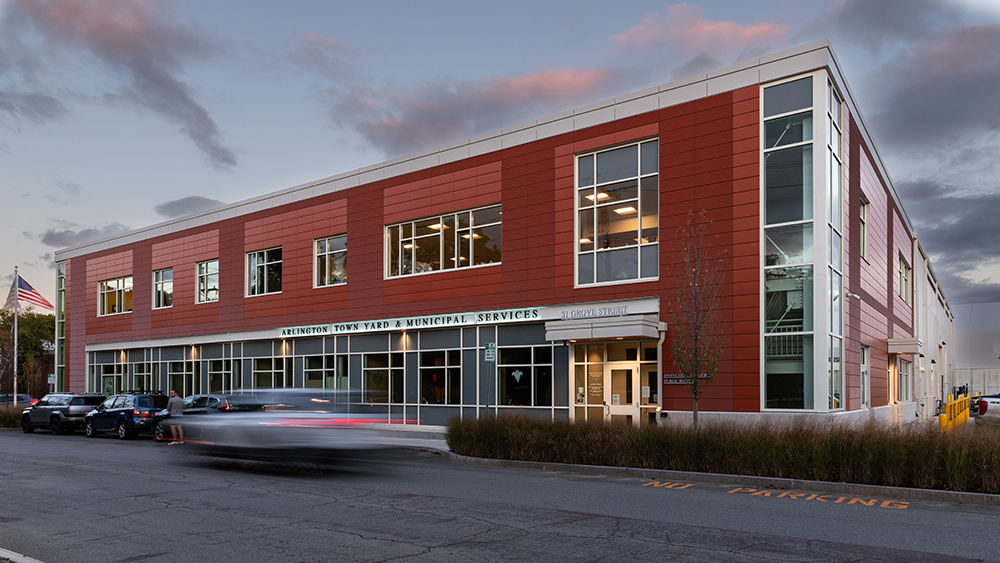News: Construction Design & Engineering
Posted: March 15, 2013
Boston Redevelopment Authority approves Suffolk University's new $62m academic building
The Boston Redevelopment Authority board unanimously approved Suffolk University's plans to move forward with a new campus building at 20 Somerset St. that will feature general-use and science classrooms, a cafeteria/function space, and indoor and outdoor lounging areas.
The BRA determined that the building is in accord with the university's master plan and that its impacts - which include relocating all academic classrooms from the residential part of Beacon Hill - will benefit the neighborhood. The university will now work with city, state, and preservation officials to finalize the design for the $62 million building and move forward with construction.
"This building will provide the flexible academic facilities essential for today's learning and teaching environment," said Suffolk University president James McCarthy. "At the same time, it shows the value of partnering with neighbors, elected officials and city agencies to find solutions that benefit all."
The building, expected to open in summer 2015, will encompass 112,000 s/f in 10 floors, two of them partially or fully below grade. There will be four floors each of general-education and science classrooms of various sizes, providing 1,100 classroom seats. It also will include student support services.
The neighborhood will benefit as active use is restored at the site of the old MDC headquarters, which will be replaced with a building designed to be respectful of its surroundings. The new building will be adjacent to open space, and the state-owned Roemer Plaza will be landscaped to provide an inviting area for students and neighbors to gather.
The university will refit the Donahue and Archer buildings for office space and eventually sell its Fenton Building and annex on Derne St. and the Ridgeway building on Cambridge St. as part of its plan to relocate classrooms.
"Through institutional planning we're encouraging colleges and universities to look at their assets strategically," said mayor Thomas Menino. "Suffolk University's decision to consolidate classroom space in a new building closer to the core of their campus benefits the institution and their neighbors in Beacon Hill."
The BRA's approval of the redesigned project is the result of a collaboration among Suffolk University, elected officials, and a community task force made up of members from surrounding neighborhoods, as well as Beacon Hill and representatives of the abutting Garden of Peace.
The university is working with the NBBJ architectural firm. The 20 Somerset St. project will be designed for LEED Silver Certification.
Features of the 20 Somerset St. project include:
* Create more than 300 new construction jobs.
* Relocation of all classrooms and a cafeteria currently located within the residential area of Beacon Hill.
* Return an active use to a now-vacant property.
* Create a vibrant new public space for use by all through improvements to Roemer Plaza.
* Maintain the existing building setback from the adjacent Garden of Peace and provide an appropriate building façade facing the Garden.
* Maintain the existing building height, thus producing no new shadow on the Garden of Peace.
"This is a textbook case of neighbors, elected officials, and the university coming together to craft a project that benefits all," said John Nucci, the university's vice president for government and community affairs. "We listened very closely to everyone involved, and the result is that we now all agree that this project will be an asset to Suffolk University, Beacon Hill, and the whole area for decades to come."
MORE FROM Construction Design & Engineering
Weston & Sampson earns award from ACEC for Arlington DPW job
Arlington, MA Weston & Sampson Engineers, Inc., has earned a National Recognition Award for exemplary engineering achievement in the American Council of Engineering Companies’ (ACEC) 58th annual Engineering Excellence Awards (EEA).

Columns and Thought Leadership

The design-build advantage: Integrated interior design solutions - by Parker Snyder
When it comes to corporate interior spaces for both commercial and industrial projects, partnering with a design-build firm with in-house interior design services can offer clients many benefits. Unlike traditional delivery methods where interior designers operate independently from the design and construction teams, often creating a longer project timeline as cost negotiations and revisions ensue

The rise of incubators and co-working spaces: The latest in life sciences - by Matt Combs
In recent years, the life science industry has witnessed a shift in how companies operate and innovate. One of the key driving forces behind this transformation is the emergence of incubators and co-working spaces specifically tailored to meet the unique budget and schedule needs of startups.

Careers in Construction Month focus on training and safety - by Joe Camilo
October is Careers in Construction Month, and rarely has it been more consequential. According to our chapter’s national parent organization, the construction industry needs to attract half-a-million new workers in the coming year to meet demand. Addressing that need is a huge job, but we at ABC MA are trying to do our part.

Ask the Electrician: Is summer a prime time for commercial electrical maintenance?
The answer is “Yes!” While January marks the official new year, many businesses view September as a fresh start. This makes summer an ideal time for commercial property owners to schedule long-term electrical maintenance projects.








.png)
